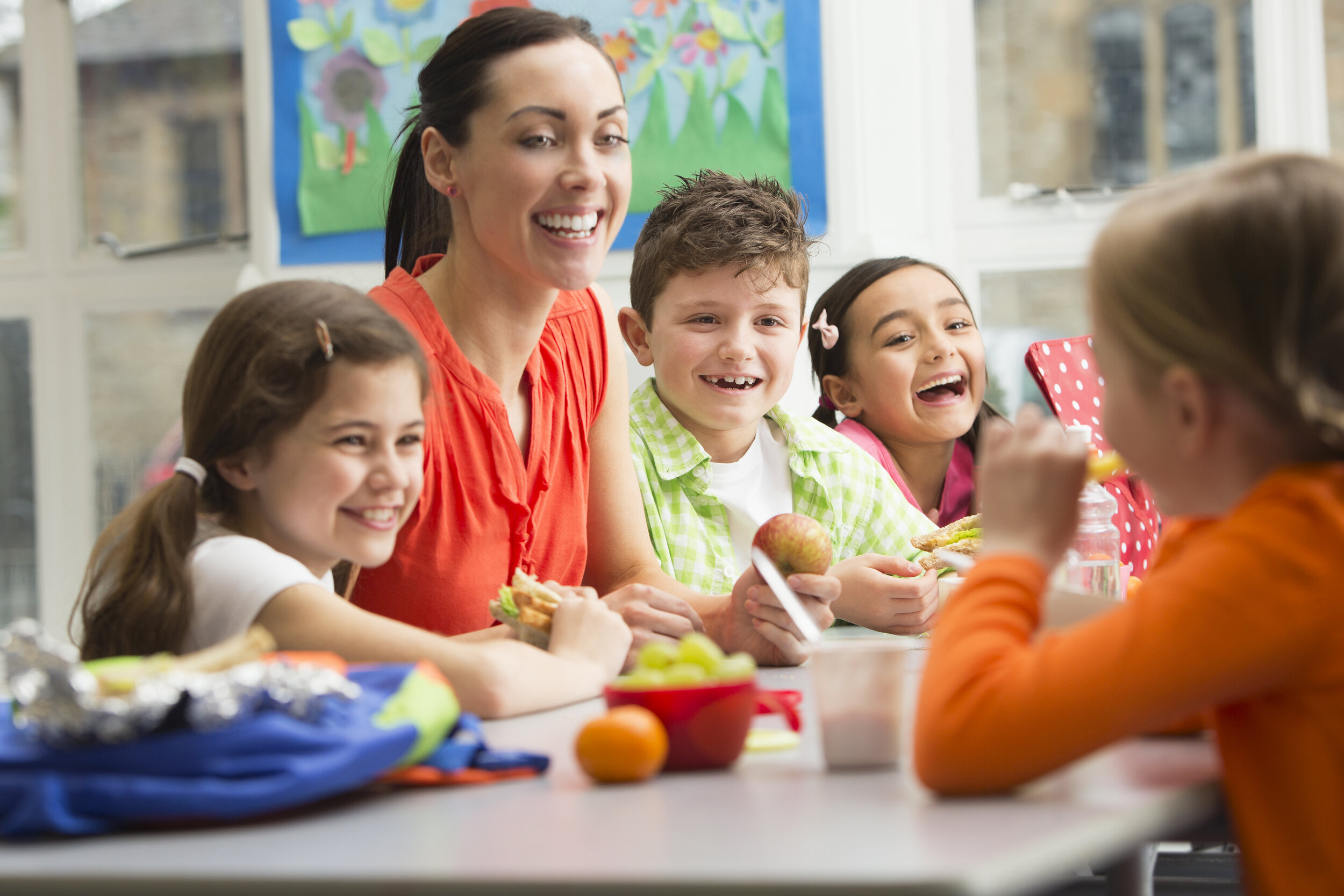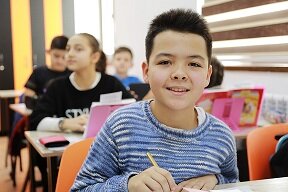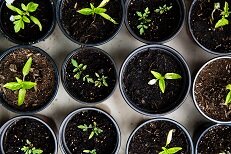Teaching healthy eating: did you know that how we eat is important too?
Does teaching about healthy eating ever seem challenging – but also full of opportunity? That’s because it’s about so much more than simply teaching your students what to eat.
How we eat matters
Where we eat, who we eat with, how we eat. These all have an effect on us: they can affect our connection with others, our mood and physiology, our mental health, and our overall well-being. Being able to sit down in a comfortable environment, having time to enjoy our food, and spending time with people we enjoy being with provides a break from our hectic day and a chance to reboot. The same is true for your students.
How we eat also plays a role in determining what we eat and our overall nutrition.
As emphasized by the revised Canada’s Food Guide (1) many factors affect food intake, nutrition and eating habits. These include attitudes about food and eating, how connected we are in our eating, whether we can listen to our bodies’ hunger and satiety cues, eating environments, socioeconomic status, food literacy, and culture and family traditions (2). All of these factors influence how we eat, and becoming more aware of these influences can lead to improved outcomes in how we feel overall, how we feel about eating, and what we eat.
How we teach about eating also matters
Similarly, how we teach nutrition education is as important as what we teach, and the good news for educators is that approaches that put eating into real-life contexts for students - by considering “the how” that influences “the what” they eat - are more relevant, engaging and effective.
Apply these 3 key NEC “how you teach” strategies and tips in your teaching to optimize student engagement and build knowledge and skills that can help students eat well for life:
Frame activities around students’ experiences, interests and needs.
Use credible sources of nutrition education information and age-appropriate activities.
Use activities that are respectful of the diverse student experiences that will be present in your class e.g. consider how students’ food choices and eating habits are impacted by personal experiences, cultural and family traditions and socioeconomic status.
Include families when possible e.g. invite families to assist with/join class celebrations or other nutrition education activities; share favourite family recipes.
Recognize that bodies come in a variety of shapes and sizes e.g. support all students - regardless of size - in appreciating and nourishing their bodies.
2. Support eating competence (3) amongst your students.
Role model the framing of food and eating in positive terms e.g. emphasize balance and moderation, and avoid vilifying or glorifying any particular foods, diets or eating trends.
Be respectful of students’ food and eating preferences and of the division of responsibility (4) during eating occasions in your classroom and school e.g. educators (the adults) decide the where and when of eating (families typically decide the what, especially for younger students) and students decide whether and how much to eat.
Build in time for students to be able to enjoy and be present in eating occasions e.g. make sure students have enough time to transition to and eat snacks and meals and support school eating environments that encourage children to want to sit and enjoy eating with their friends.
Provide students and staff with opportunities to eat together.
3. Include lessons that build your students’ food literacy.
Explore where food comes from e.g. visit a farm and/or grow food in classroom windows or in a school or community garden.
Explore how food gets to us e.g. read or watch videos about food systems and transport, visit a food processing plant and/or visit a farmers’ market or grocery store.
Build food skills to support students in enjoying eating well for life e.g. prepare a snack or simple meal in-class, make simple recipes as part of procedural writing, and/or host a potluck where students and families share favourite traditional foods.
Consolidation and Practice
How we eat matters. That’s because the overall context of (and the many influences on) our food choices and eating habits determine how we feel about food and eating and what we eat. Ultimately, how we eat impacts our physical, mental and emotional well-being.
Use the NEC strategies and tips (described above) and our free lessons (see below) to help you integrate “the how” of eating and teaching nutrition into your classroom activities.
Free lesson plans
● Foods from Around the World. Students explore foods from different cultures and how food traditions influence what we eat in this everything-you-need-to-implement lesson for grades 3 and 4.
● Mystery Food. Students explore a variety of foods using their senses - and how those senses help them to identify, choose and prefer different foods - in this easy, fun and hands-on lesson for primary division.
Stay tuned!
NEC is currently developing more resources to support your teaching - subscribe to our blog to get updates as they are released. Have any questions or suggestions for us? We want to hear from you !
References:
1. Government of Canada. (2020). Canada’s food guide https://food-guide.canada.ca/en/
2. Adapted from the Dietitians of Canada’s Nutrition Month materials. Find more information about Nutrition Month at www.nutritionmonth2020.ca
3. Satter E. Eating competence: definition and evidence for the Satter Eating Competence model. Journal of nutrition education and behavior. 2007 Oct 31; 39(5):S142-53. https://www.ellynsatterinstitute.org/how-to-eat/the-joy-of-eating-being-a-competent-eater/
4. Satter E. (2016) The Division of Responsibility. Retrieved from: https://www.ellynsatterinstitute.org/wp-content/uploads/2016/11/handout-dor-tasks-cap-2016.pdf





